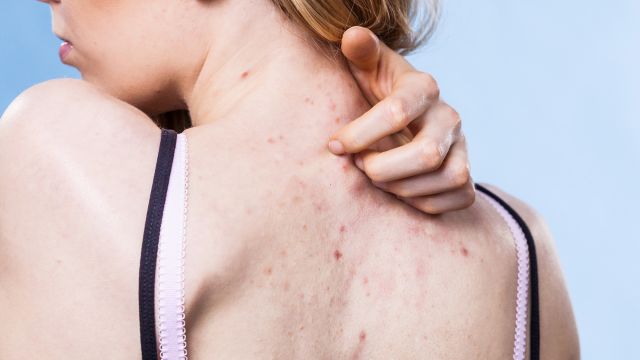Updated on March 30, 2023
Hidradenitis suppurativa (HS) is a chronic inflammatory skin disorder affecting about 1 percent of the United States' population. The first symptoms typically appear sometime after puberty, though they can occur at any age. HS is most common in women 18 to 40 years old, and the risk is higher for:
- People who have a blood relative with HS
- African American, Hispanic, and biracial people
- People with psoriasis
HS is typically a reaction to a trigger. While they can vary for different people, smoking and being overweight are common triggers.
Symptoms
The characteristic symptom of HS is skin lesions. The word “lesion” refers to an abnormal change in tissue that is the result of an injury, infection, or wound. The lesions caused by HS typically appear on areas of the body where skin rubs against skin, such as the armpits, the buttocks, the groin, and underneath the breasts.
These lesions can change in appearance over time. They may occur in one area of the body or several areas of the body.
- At first, a person may notice pain, itching, swelling, discomfort, or excessive sweating in the area that is affected.
- Lesions begin as small, firm lumps underneath the skin (called a nodule). These may look like boils, cysts, or deep pimples. These nodules are a buildup of bacteria, keratin, old skin cells, and sweat that has become trapped in hair follicles.
- A person may only notice one nodule at first. Over time, more can appear. Nodules can also grow in size and grow together.
- As they grow in size, nodules can become abscesses. An abscess is a swollen pocket filled with pus.
- Abscesses can rupture and leak fluid and pus that has a bad smell.
- In some cases, small dark lesions called blackheads can appear on the affected skin. While the dark color may look like trapped dirt, it is actually melanin, a pigment found in the skin.
- Scarring and skin thickening can occur as a result of the repeated formation, rupturing, and healing of abscesses.
- Repeated abscesses can also result in sinus tracts (also called tunneling). Sinus tracts are permanent channels that form between abscesses and the surface of the skin. Pus drains through these channels. Surgery may be needed to repair the damaged areas of the skin.
The severity of symptoms can vary, and HS can get worse with time. HCPs use a staging system to categorize the severity of HS.
The Hurley System
The staging system used to categorize severity of HS is called the Hurley system or Hurley stages:
- Stage I—abscesses, but no scarring or sinus tracts
- Stage II—single or multiple, widely separated abscesses with sinus tracts and scarring
- Stage III—abscesses, sinus tracts, and scarring over the entire affected area
Symptoms of HS are recurrent or relapsing—symptoms may heal and recur, and they may be better or worse at certain times during a person’s life. Anyone who has HS or symptoms of HS should work with a dermatologist for an evaluation, diagnosis, and appropriate treatment. A care plan can help to keep HS from progressing, prevent scarring, and may help keep the emotional ups and downs of HS at bay.






